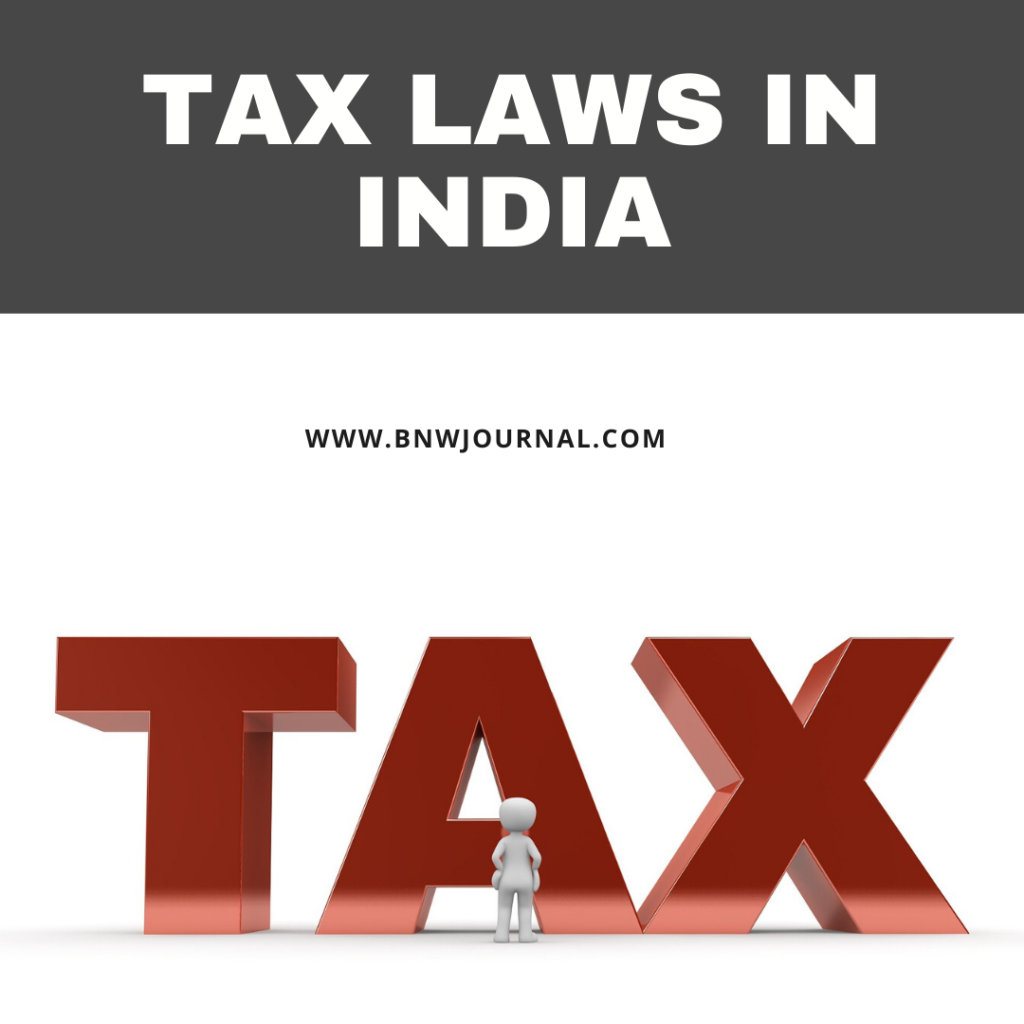![]()
INTRODUCTION
The word tax comes from its Latin root ‘taxare’ which means to estimate. The taxation system in India traces its origins from texts like Manusmriti and Arthashastra. As mentioned in these texts, traders, handicrafts workers, farmers, would pay taxes in the form of silver, gold, and agricultural produces.

Taking signs from such practices with some add alternatives that would suit the society, the basis for the modern tax system in India was by the British as Sir James Wilson introduce ‘Income Tax’ in 1860. Tax should not be misunderstood as a voluntary payment or donation to the government but an enforced payment[1]. The tax structure is designe in a way to complement the economic growth of a country.
Tax system is broadly of three types:
- Progressive tax: In this system the tax rate increases with the increase in income. Income and the tax rate are directly proportional. The higher income group pays more taxes than the lower-income group.
- Regressive tax: In this system the tax decreases with an increase in income. Income and the tax rate are inversely proportional. Greater tax revenue is earned from the lower-income group than the higher income group.
- Proportional tax: In this system the tax rate does not change with change in income. The lower and the higher income group pay a certain amount as decided by the government.
Tax is levied on real and artificial persons in different ways. Taxes are of two types mainly-(a) direct tax and (b) indirect tax. Direct tax is tax paid to the government directly at regular intervals or annually. For instance, income tax, wealth tax, corporate tax, etc. Direct taxes affect an individual’s disposable income which on the bigger picture hampers the economy. But if proper deductions are permitted on investments it will lead to better capital formation. It helps the government with readily available revenue and also increase the planned expenditure.
Indirect tax is paid in chains that are the customer pays to the product seller. The seller to the manufacturer and further. It means that the consumer indirectly pays tax to the government. For instance, GST, custom duty, excise duty, etc. As the burden falls on the consumer directly. The efficiency of the producers and the manufacturers to maintain demand and better their cost-cutting measures. This will eventually lead to optimum utilization of resources as the producers will aim to reduce the production cost.
The progressive tax structure is follow in the case of direct taxes. Eventually leading to an increase in yield as it will facilitate the base growth.
LEGAL SET-UP
Tax policies play a dynamic role in the county’s progress in terms of efficiency and equity. Article 265 of the Indian Constitution lays down the authority of law. It is to be the only one who can levy and collect taxes. Citizens and residents are treated differently under the law with different tax provisions.
Direct tax policies mainly reflect on the Income Tax Act, 1961. It provides different slabs for different sets of income groups following the progressive tax system. It levies taxes on an individual, a HUF, a company, a firm (including LLP), an AOP or a BOI; a local authority, and every other artificial juridical person.
The definition of income includes everything that is not only explicitly declared but also incomes according to its natural import[2]. So before understanding the tax policy that will imply the sum of money received; we must determine whether the sum of money receive falls under the definition of income under the act. For instance, capital receipts are not the same as revenue receipts and tax implications of all revenue receipts are provided and not on capital receipts[3].
The government makes provisions for partial tax exemptions for regular taxpayers. Section 80C and Section 10(10D) of the Income Tax Act of India provide for deductions for premium paid for life insurance policies, etc.
Direct taxes also include the corporate tax provide under the Income Tax Act,1961. It applies to all companies that are register under the Companies Act, 2013. Indian and Foreign companies are liable to pay corporate taxes. But the difference lies in the amount of income that is taxable.
For Indian companies the tax is levied on the overall income. But for the foreign companies it is levie on the part of the income earn within India. The income of a company includes Profits earned from the business, Capital Gains, Income from renting property, Income from other sources like dividends, interest, etc. The corporate tax rate for domestic companies in India was 30%. But after the introduction of the Budget 2020 the corporate tax has been slash to 25%.
Indirect taxes in India have comply with the Goods and Services Act,2017 that was form under Article 279(A) of the Constitution. The combination of various taxes into one common tax that is levied will help in controlling the inflation to a certain extent and improvise the GDP. Multiple unorganized sectors will enjoy the cost advantage equal to the tax rate.
GST has been divide into three types namely(a) CGST stands for Central GST, (b) SGST stands for State GST, (c) IGST stands for Interstate GST. The introduction of GST was a huge change in the taxation policy that India follow as now the whole nation is bound to a single tax system. It breaks the tax barriers between states and leads to a more transparent system.
The most recent legislation pass is the Vivad Se Vishwas Act, 2020, and Direct Tax Vivad Se Vishwas Rules, 2020 which was enact on 18 March, 2020. The Rules have provided for five forms for declaration, undertaking, granting of the certificate, intimation of payment inclusive of proof of withdrawal, and issuance of the order. The forms must be file online under digital signature.
It is expect that taxpayers will be able to achieve resolution of their tax disputes within the first window, which ends by 31 March 2020 per the VsV Act. In the second window, the taxpayer may be able to settle his disputes and get a complete waiver of interest and penalty, by the payment an extra charge as specified in the VsV Act. In most cases it will be 10 percent of the disputed tax.
The Government of India had signed a Tax Information Exchange Agreement (TIEA) with the Government of Brunei Darussalam on 28 February 2019. The TIEA is sign to enable the exchange of information relating to banking and ownership between the two countries for tax purposes. It shall provide assistance in the collection of tax claims between the two countries which will help curb tax evasion and tax avoidance.
BUDGET 2020
The budget this year has brought in a lot of reforms. Finance minister Nirmala Sitharaman tabled the Union Budget 2020-21 in the Lok Sabha launching the new personal income tax regime that will favor the middle-class to save taxes and also scrapped dividend distribution tax (DDT). The elimination of DDT will make equity investment more attractive and the rate of equity investments is expect to grow.
Tax slabs have been revise and some new slabs have been introduce. It is the new ‘simplified tax regime’. Individuals with a net taxable income of up to Rs 5 lakh will be able to avail tax refund of Rs 12,500 under section 87A in both, the existing and new, tax regimes. One thing that has not changed is that individual taxpayers having net taxable income of up to Rs 5 lakh will continue to pay zero tax in both tax regimes and that income tax rates those earning above ₹15 lakh will continue paying 30%.
The Income Tax Act, (ITA) 1961 recently amend to giving domestic companies the option to avail a 22% tax rate if they did not claim certain deductions. The list has been expand to include other deductions, such as those under Section 80G of the ITA,1961 and this option has been given to cooperative societies as well. The definition of resident changes as a person living for more than 120 days from182 previously.
Charitable organizations are exempt from taxation under Section 12AA, and donations to them are exempt under Sections 10(23C), 35, and 80G. The difference is the approvals under these sections will be valid for a maximum of five years. Any entity having these approvals has to get them re-issue in regularly. This will maintain clarity and transparency of the organizations that are being exempt and any changes can be update with proper follow up.
The Banking Regulation Act, 1949, SARFAESI Act, 2002, The Factor Regulation Act, 2011 will be amend for better governance of cooperative banks and easier debt provisions for the Non -financial banking companies.
The Budget changes with respect to the income tax rates and slab is to give relief to the common man. The finance ministry may loosen fiscal deficit targets, as recommended by Chief Economic Advisor KV Subramanian in the Economic Survey as the India set itself an ambitious tax target. Now it’s far away from achieving it[4]. The Union Budget is unlikely to have any state-specific schemes too.
CONCLUSION
The tax policies have evolve a lot over the past years to make sure that loopholes are cover and prevent tax evasion. The importance of indirect taxes has increased over the years. Although there has been an increase in collection of the direct taxes, its contribution to the total tax has declined. A well-structured and a simplified tax system will help in overall economic growth and raise sufficient revenue for government priorities. In today’s world capital is highly mobile and businesses will choose countries with low tax rates for investment purposes. Tax policies must be carefully draft keeping all such factors in mind.
References:
[1] Chakroborty & Rao 2010.
[2] Kanga Palkhivala and Vyas, The Law and Practice of Income Tax, Ninth Edition at p. 142
[3] Padmaraje R. Kadambande v CIT [1992] 195 ITR 877.
[4] https://www.bloombergquint.com/union-budget-2020/budget-2020-india-is-headed-for-its-biggest-tax-shortfall-in-a-decade.



0 Comments